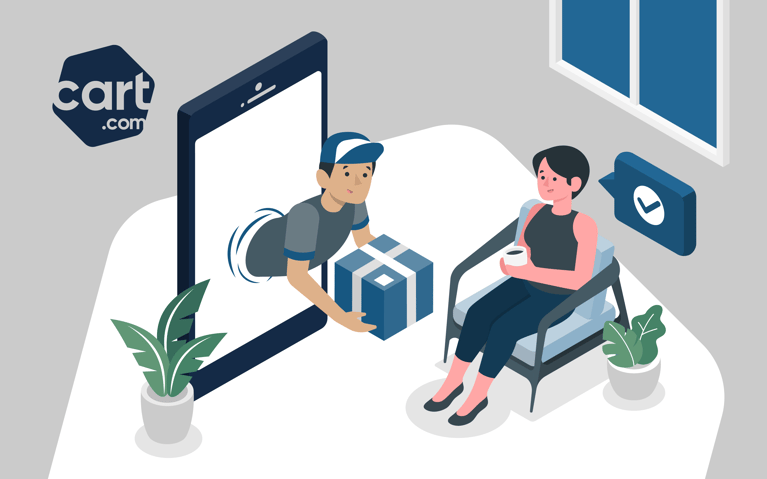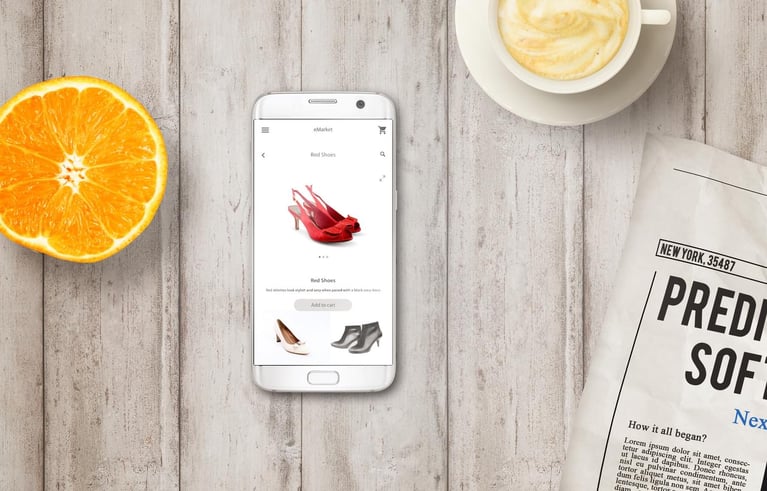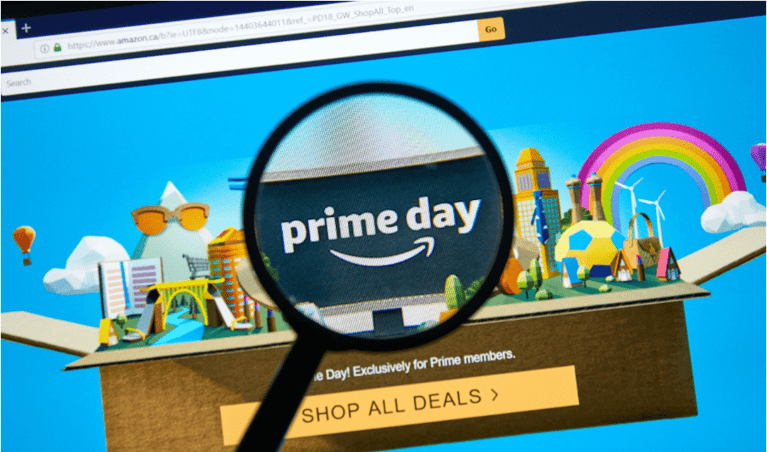Here's the situation. You just got back from eTail West, and your boss wants to know what you learned last week. Or even worse––your boss wants you to present key takeaways to the rest of your team, but you were so focused on networking that you forgot to take notes.
No worries! Cart.com has your back.
While the rest of my team was at our lively booth meeting with brands and retailers like yourself, I attended as many sessions as possible. Well, when I wasn't feeding at the ever-changing snack tables.
Here’s your eTail Cheat Sheet with the top themes I gathered from customers over two glitter-donut-fueled days of sessions. Feel free to cut and paste … we won't tell.
1. Elevated CX is the new, new normal in a "post-pandemic" world
Only time will tell if the pandemic is truly winding down or if we’re just enjoying a break until the next Greek letter comes along. Still, it was refreshing to be back at an in-person conference talking about the "post-pandemic era" of retail.
Brands and retailers are still trying to figure out what happened these last two years, while also considering how to maintain the elevated experience customers have come to expect since retailers pivoted online in early 2020. It’s no surprise that COVID-19 accelerated digital transformation, especially for grocers, luxury products and other goods historically sold predominantly in store. Chris Rupp, EVP, Chief Customer and Digital Officer at Albertsons opened the day on Tuesday discussing their pivoting partnership with DoorDash to guarantee thirty-minute delivery. Like grocers, all categories experienced massive online growth, according to their ecommerce analytics, as online sales grew 50% to $870 billion during the pandemic, according to a recent study shared by Retailgeek’s Jason Goldberg.
Still, there were clear winners and losers when it came to how quickly retailers pivoted during the pandemic. So, now, retailers are considering new ways to be as responsive and convenient post-pandemic as they were during the height of the pandemic. To that end, Doug Zarkin, CMO of Pearle Vision Luxottica said, “If you deliver a strong experience, you can charge a premium. Everyone is seeking value from the brands they trust.”
Meanwhile, Cart.com customer Carolyn Pollock, CMO of Tailored Brands spoke about the accentuation of leadership fundamentals during Covid, taking more risks and becoming comfortable with change.
Takeaway: The bar has been raised and there’s no turning back. What can you do differently or better to elevate your CX?
2. Physical retail is having a moment
While this conference was focused on ecommerce, physical stores are back, and many online-first brands are dabbling with retail stores to extend their relationship with their customers. Even for established in-store brands and retailers, the role of the physical store has evolved from a sales channel to a marketing channel, a distribution center for BOPUS (buy online, pickup in store) and an omnichannel brand experience.
With online customer acquisition costs rising, several online brands are investing in pop-ups to market themselves. Savannah Sachs, CEO OF TULA Skincare said it is more profitable and efficient to acquire a customer in retail stores than it is online. She suggested to treat your retail presence as a marketing channel and that their 1300 retailers equate to 1300 “out-of-home advertising moments.”
In the spirit of the upcoming Oscars, physical stores were nominated for “Best Supporting Actor to eCommerce” at eTail West, with many mentions for their roles in boosting online sales.
Theresa Palermo, SVP, Marketing and Connected Commerce at Signet Jewelers (parent company to Kay, Zales and more) spoke about connected commerce by saying, "It’s about the ‘and’–– it’s all of the things coming together." She said their number one conversion factor is human interaction. Jewelry is a highly emotional category, so they still need to have the ability to talk to people whether in-store, on the phone, or through online channels.
Rich Fulop, CEO of Brooklinen and Liz Dolinski, Chief Growth Officer of Lunya talked about how important it is to feel and touch their soft linen and sleepwear brands. Rich said, even if customers don’t buy when visiting a store, it helps their brand remain top-of-mind when consumers are ready to purchase online.
John Sheldon, CMO of SmileDirectClub launched an oral care line to extend their relationship with consumers beyond their more intensive aligner business. With seven feet of shelf space at Walmart, their brand reaches 110 million people each week.
While online spending was up more than 40% in the second quarter of 2020, don't call it a glow up. Many experts suggest it would have gotten to this point without the pandemic. Physical retail still accounts for 77% of all retail and remains a critical part of an omnichannel strategy.
Takeaway: Measure the role of your physical stores in assisting online sales, rather than just ROPO/ROBO (research online, purchase/buy offline).
3. Everywhere commerce is the new ecommerce
Marketplaces are becoming increasingly more important in maximizing the reach of your products and many brands and retailers spoke to channels as a necessary complement to their D2C business. Derek Correia, President of ReserveBar said, "It's not an ‘or’ decision; it’s an ‘and’ decision. It comes down to which marketplaces and how many you can manage." As one speaker pointed out, the power of being truly "omni" means not being overly reliant on one channel.
It's important you have a strong optimization strategy and technology to compete with brands in China. Jean-Marx Mantilla, Senior Digital Marketing Director of Lands' End discussed how we’re competing with people who get up every day and optimize their listings. He advised, "You have to understand what it takes to win and winning doesn't mean your assortment. It means what you're profitable with."
Some brands are maximizing their ability to reach as many channels as possible. To do so, they adopt an exclusion strategy focused upon which channels they shouldn't utilize rather than which they should. Firat Ozkan, Co-Founder of Mount It is on thirteen to fourteen different marketplaces and channels and maximizes reach of his products. Firat said, “As long as the brand matches with the customer profile of the marketplace, and margins work out, then why not?”
However too many channels can backfire. Some brands caution that it's best to use less channels better, and to make the messaging and marketing more impactful. Jessica Granata, VP of Growth Marketing at Andie said, "I hope that brands start to realize that instead of doing nineteen channels, do like twelve channels and do them better.”
Takeaway: To be truly omnichannel, you need to measure traffic and sales holistically across channels.
4. More love for CX after the buy button
Since it costs more to acquire than retain a customer, brands and retailers are starting to focus more on loyalty with optimization after the buy button. Terra Cochrane with Lush Handmade Cosmetics said, "Don't ignore past the buy button as it's probably the biggest Achilles heel in your customer experience." It's not just about doing BOPUS and same day delivery, but how can you do it differently and better?
Rebecca Zarate, CMO of RedBubble said that with the cost of acquisition going up, it's easier to keep loyal customers. They are seeing a resurgence of channels like email where you can talk personally with customers. Fallon Clayton, Marketing Manager at BackCountry spoke about loyalty in terms of being authentic to their brand. They’ve launched discounts for groups like healthcare workers and military personnel. They incorporate customer stories on holidays like Veteran's Day and offer their discounts so that these special groups receive more than just a thanks.
Christine Monaghan, VP of Digital at Astral Brands pointed out that you don't have to have a loyalty program to treat customers well and that loyalty should be infused in the customer experience.
This includes fulfillment, which is a critical part of loyalty. While consumers love fast fulfillment, they also value transparency. Consumers would rather know their orders are arriving a week late than wait blindly for their delayed two-day order to arrive. Consumers are more forgiving than you think when it comes to disruptions in supply chain and carrier delays, so just shoot straight with them.
Takeaway: Consider creative new ways to delight and reward loyal customers post-purchase beyond standard loyalty programs.
5. Build, partner or buy, oh my
Brands and retailers of all sizes are thinking more carefully about the technology they build, buy and partner, letting vendors do what they do best with their larger engineering teams and expertise. Some, like Scott Saeger, CIO at Cart.com client GNC are adopting a composable approach, limiting points of failure through a single API that connects the front and back end.
David Spector, Co-Founder and President of ThirdLove said they wasted a lot of seed money building a stack. He suggested utilizing vendors as much as you can, which is much easier than building in-house with an engineering team. Heather Falls, Sr. Director of Engineering/Supply Chain Merchandise at StitchFix spoke about pairing risk with data science to test a hypothesis quickly and asks her team, “How do we lean on external tools to do something better rather than figuring it out in-house?”
More is not necessarily more though. Brands should weigh the depth of point solutions against the convenience of a single vendor and unified data that come with end-to-end solutions like Cart.com. Jessica Granata, VP of Growth at Andie said the amount of marketing technology is keeping her up at night, that she needs to hire someone to vet vendors and is seeking consolidation. This fatigue is something we hear about often from our customers who went from in-house solutions to managing fifteen vendors in their stack.
Takeaway: Look across your in-house technology and evaluate if a technology partner can do it better, as well as which vendors in your tech stack could be consolidated.
6. Metaverse and NFTs are coming in hot
While most people don't quite understand how to get an NFT in the metaverse (or what that even means), brands and retailers know that question will be coming from buzz-minded leadership soon. (Note from Author: I'm the wrong person to talk about this. I was given a postcard of an NFT, which now hangs on my fridge, and I have no idea where it lives in its true digital form). However, Amazon is making huge investments in the metaverse, but as many mentioned at eTail, the excitement is outpacing the practical marketing benefits and there has yet to be a lot of direct advertising in the metaverse.
Sonia Nagar, General Partner at Pritzker Group Venture Capital is excited to see how NFTs are bridging the gap IRL by providing exclusive in-person experiences to NFT collectors. She said Nike has been leading the way after acquiring RTFKT, an NFT collectables studio making virtual sneakers for the metaverse. She said these are ultimately a form of loyalty programs when you combine metaverse digital assets to real world exclusive physical products and experiences. According to Theresa Palermo, SVP, Marketing and Connected Commerce at Signet Jewelers, over 1 million people were engaged to be married in the metaverse last year and the brand is now considering how to be a part of that.
Takeaway: Get educated and keep a close eye on brands that are leading the way, like Nike and Adidas. Buy an NFT and dive into the metaverse yourself so you can speak intelligently when your boss inevitably asks about your metaverse strategy.
7. What are you giving me for my data?
Data is more valuable than ever in a cookie-less world and consumers know it. However, all hope is not lost when it comes to collecting and mining their valuable data. Consumers are more likely to provide data if you provide them something in return. Dimple Rao, VP and Head of Digital Product Management and Product Design at Chico's FAS, Inc. said, "When you're able to take friction out of the customer experience, there is more propensity to provide the data."
Max Johnson, CEO & Co-Founder of Awe Inspired created data-rich experiences that customers love by offering them insight into their personality and spirituality, which connects them to products in his jewelry brand.
There is still a lot of discussion around the best ways to utilize this data to take calculated risks with small scale tests. Meera Bhatia, COO of Fabletics said they can use their data to take intelligent risks by breaking it apart and performing small tests. She also encouraged brands to use tools that free up teams and allow them to do the thinking and apply their special sauce. Ryan Close, CEO of Bartesian said that as a smaller brand, they can take more risks with data collection and tests. However, he also said data for the sake of data is not the right way to look at it.
To that end, Robert Elzner, Head of Global eCommerce at Dell Technologies, our Austin neighbors, said, "How customer data is being used is as dramatic as the transformation we've been discussing."
Takeaway: Look at all the places from where you’re collecting customer data and what value you’re giving those customers in return. If the answer is none, see how you can change that.
Conclusion
This was a welcomed event after two years of virtual event fatigue. I walked away energized, as well as a few pounds heavier from gratuitous pop tarts, and chicken and waffles. Everyone was buzzing from being back with their peers on the tradeshow floors and in sessions. This was the third eTail I’ve attended on both the vendor and retail side (when I was at Walmart), and the discussions and technology solutions were as robust as the food spread.





